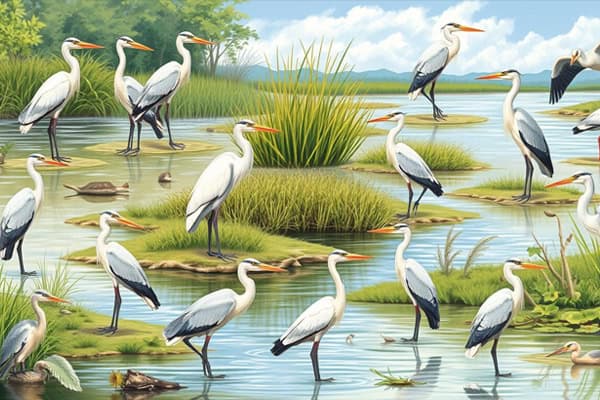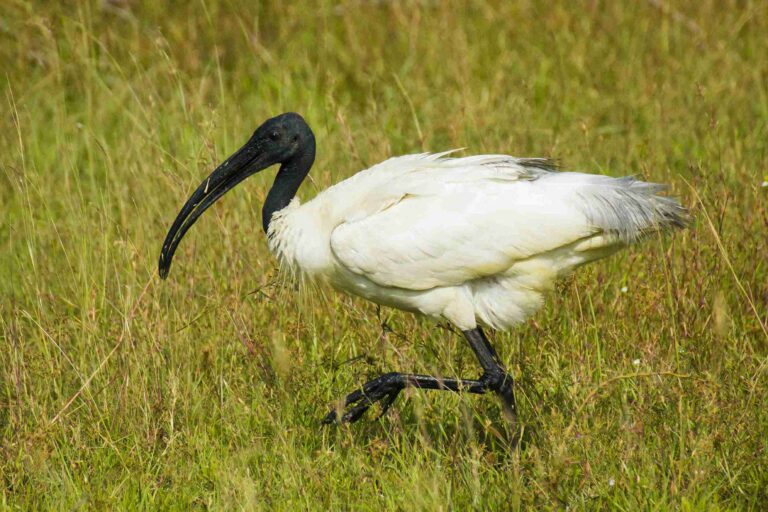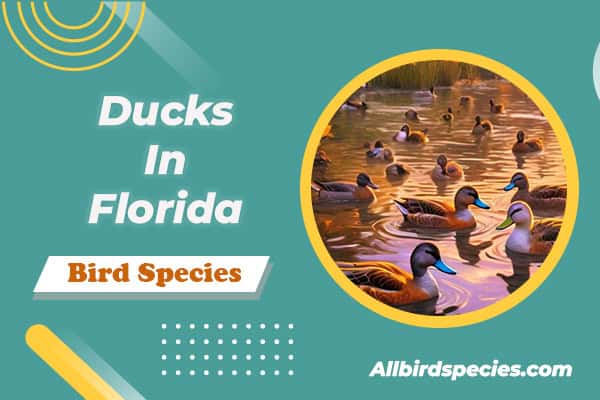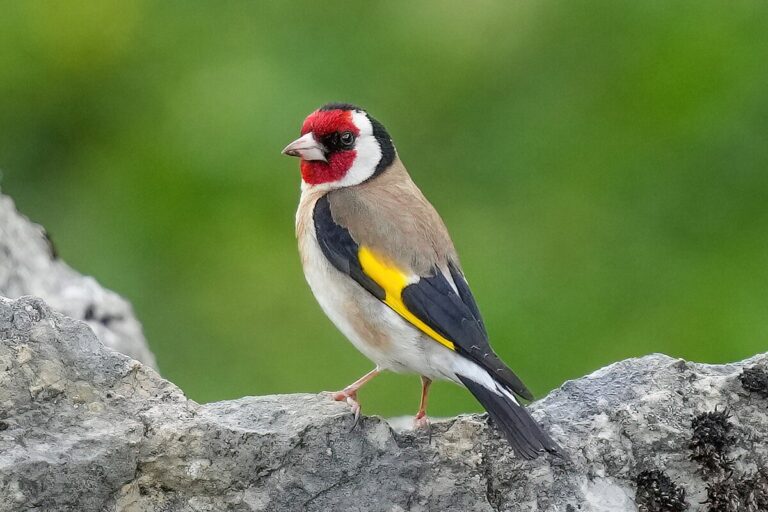12 Types of Herons in Texas (ID Guide With Photos)
Did you know Texas is a hotspot for over 40 species of herons and wading birds? It’s a top spot for bird lovers. The state’s wetlands and coasts are home to many herons, each playing a key role in our ecosystem. We’ll look at 12 amazing types of herons, like the Great Blue Heron and the American Bittern. We’ll cover their unique traits, where they live, and how they behave.
Let’s dive into the world of herons, including the Black-crowned night heron, Green Heron, and Cattle Egret. This adventure will deepen our love for these birds and show their importance to nature. It’s perfect for birdwatchers or anyone interested in learning more about Texas’s herons.
Common Herons Found in Texas:
- Great Blue Heron
- American Bittern
- Black-crowned Night-Heron
- Green Heron
- Cattle Egret
- Great Egret
- Snowy Egret
- Least Bittern
1. Great Blue Heron
- Scientific name: Ardea herodias
- Life span: 15 years
- Size: 91-137 cm
- Weight: 2-3.6 kg
- Wingspan: 167-201 cm
The Great Blue Heron, known as Ardea herodias, is a bird we often see in Texas’s wetlands and coastal areas. It’s big and looks amazing, making it a wonder of nature.

Physical Characteristics
This bird is quite tall, measuring 36 to 54 inches. It weighs between 4.4 to 7.9 lbs. Its wingspan is huge, reaching 66 to 79 inches. It has beautiful blue-gray feathers and long legs that help it blend into its surroundings.
Habitat and Behavior
Great Blue Herons of Texas live in coastal areas, marshes, and wetlands. They are great at fishing, wading quietly to catch their prey. They are very patient hunters. These herons play a big role in keeping the ecosystem balanced by controlling fish populations and living with other birds.
2. American Bittern
- Scientific name: Botaurus lentiginosus
- Life span: 6 years
- Size: 58-81 cm
- Weight: 0.4-1 kg
- Wingspan: 91-104 cm
The American Bittern, known as Botaurus lentiginosus, is a bird that loves to be alone. It’s known for its skill in blending into its surroundings. In Texas wetlands, it stands out with its unique hunting ways and camouflage.
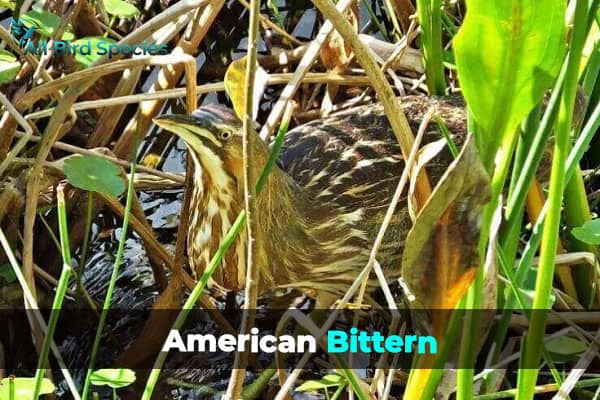
Camouflage and Hunting Skills
This bird is 23 to 32 inches long and weighs between 0.9 to 2.2 lbs. Its special feathers help it hide in the reeds and marshes. The colors of brown and buff let it stay hidden from predators and prey.
When hunting, the American Bittern is very stealthy and patient. It stalks fish and amphibians with great care. If it spots prey, it waits for the perfect time to attack. This requires knowing the wetlands well, which the Bittern does thanks to its great camouflage.
It makes a ‘gulp’ sound to talk to other birds and mark its territory. This sound can be heard across the wetlands, showing where the American Bittern lives.
| Characteristic | Details |
|---|---|
| Scientific Name | Botaurus lentiginosus |
| Length | 23-32 inches |
| Weight | 0.9-2.2 lbs |
| Plumage Color | Brown and buff |
| Hunting Technique | Stealth and patience |
| Common Call | ‘Gulp’ call |
3. Black-crowned Night-Heron
- Scientific name: Nycticorax nycticorax
- Life span: 20 years
- Size: 61-69 cm
- Weight: 0.6-1.2 kg
- Wingspan: 91-122 cm
The Black-crowned night heron, known as Nycticorax nycticorax, is easily recognized by its black crown and bright red eyes. It grows to be 24 to 27 inches tall. This medium-sized heron is a common sight in Texas’s wetlands. It is most active during twilight hours, making it a favorite among birdwatchers and nature lovers.
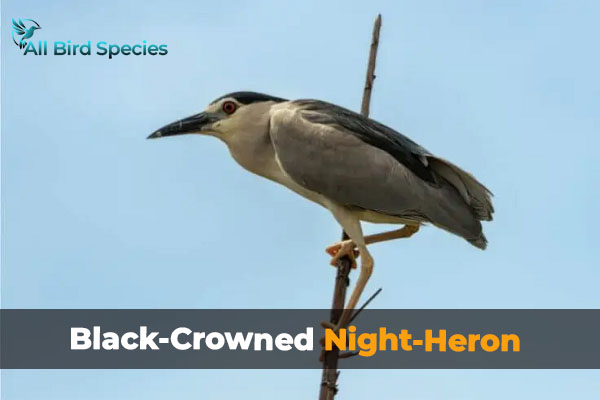
These herons are well-suited for hunting in low light. They hunt for fish, crustaceans, and insects. Their hunting skills are impressive, showing how well they adapt to their wetland homes. By controlling aquatic populations, they help keep the wetlands healthy.
| Characteristic | Description |
|---|---|
| Scientific Name | Nycticorax nycticorax |
| Size | 24-27 inches |
| Coloration | Black crown with red eyes |
| Activity | Nocturnal behavior |
| Diet | Fish, crustaceans, and insects |
| Habitat | Wetlands |
In summary, the Black-crowned Night-Heron is a key indicator of wetland health. It’s a fascinating example of adapting to hunt at night. This shows the diversity and vibrancy of Texas’s ecosystems.
4. Green Heron
- Scientific name: Butorides virescens
- Life span: 7 years
- Size: 38-50 cm
- Weight: 0.1-0.2 kg
- Wingspan: 58-66 cm
The Green Heron, known as Butorides virescens, is a bird that stands out for its smart hunting ways. It’s a small bird, about 15-20 inches long, with beautiful greenish-gray feathers. Its hunting methods are quite different from other herons.
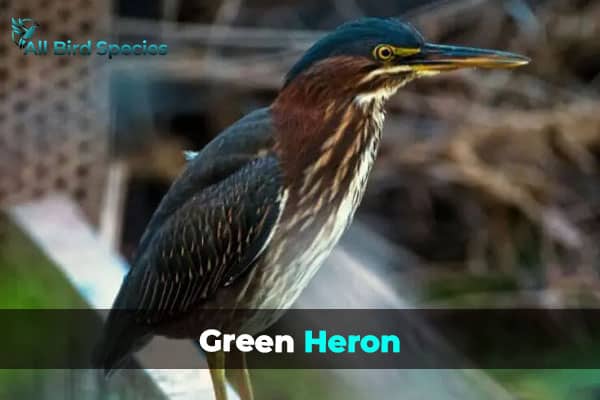
Unique Hunting Techniques
This bird is known for using tools, like twigs, to catch fish. This shows its problem-solving skills are quite advanced. It’s a rare sight in the bird world.
Green Herons live in both fresh and saltwater places, like wetlands and estuaries. They hunt with a mix of sneakiness and patience. They catch fish, frogs, and small bugs with their sharp eyesight. This makes them important hunters in their environment.
Related Video of Herons in Texas
5. Cattle Egret
- Scientific name: Bubulcus ibis
- Life span: 9 years
- Size: 46-56 cm
- Weight: 0.2-0.5 kg
- Wingspan: 88-96 cm
The Cattle Egret, known as Bubulcus ibis, is vital in Texas’s agricultural world. These herons are great at finding food, often near livestock. They work with cattle and other animals to keep the ecosystem healthy.
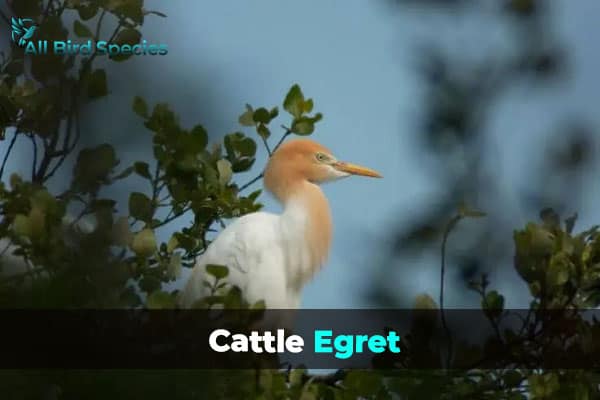
Ecological Benefits of Cattle Egrets
Cattle Egrets bring many benefits to pastures. They eat insects that bother livestock, keeping pest numbers down. This means less need for harmful chemicals, making the environment healthier.
These birds also tell us about the health of the land. A lot of Cattle Egrets means the ecosystem is doing well. Here are some main benefits of having Cattle Egrets around:
- Natural pest control in livestock areas
- Indicator of ecosystem health
- Support for sustainable agriculture practices
| Benefit | Description |
|---|---|
| Pest Control | Cattle Egrets eat insects that bother livestock, helping to manage their numbers. |
| Indicator Species | Seeing many Cattle Egrets means the farm is healthy. |
| Reduced Chemical Use | They help control pests naturally, so there’s less need for dangerous pesticides. |
Cattle Egrets are more than just pretty birds; they’re key to keeping farm lands balanced. By supporting their homes, we improve farming and keep Texas’s environment healthy.
6. Great Egret
- Scientific name: Ardea alba
- Life span: 15 years
- Size: 81-101 cm
- Weight: 0.7-1.4 kg
- Wingspan: 140-170 cm
The Great Egret, known as Ardea alba, stands out in Texas’s wetlands. It is tall, measuring 32 to 40 inches, and has a wide wingspan of 55 to 67 inches. Its all-white look makes it a favorite among birdwatchers and nature fans.

This bird is key to the ecosystem’s balance in wetlands. It eats fish and small water creatures, keeping their numbers in check. This helps maintain a healthy food chain. Seeing Great Egrets also tells us about the health of their wetland homes.
We often see the Great Egret in shallow waters, waiting for the perfect moment to catch its prey. Their patience and grace show their true nature. These birds are vital in the complex world of nature.
7. Snowy Egret
- Scientific name: Egretta thula
- Life span: 17 years
- Size: 56-66 cm
- Weight: 0.3-0.6 kg
- Wingspan: 86-102 cm
The Snowy Egret, known as Egretta thula, is a sight to behold with its beautiful look and swift hunting skills. It stands about 22-26 inches tall and has a wingspan of 34-40 inches. This smaller egret stands out with its white feathers and yellow feet. It is often seen in coastal waters, hunting in a unique way.
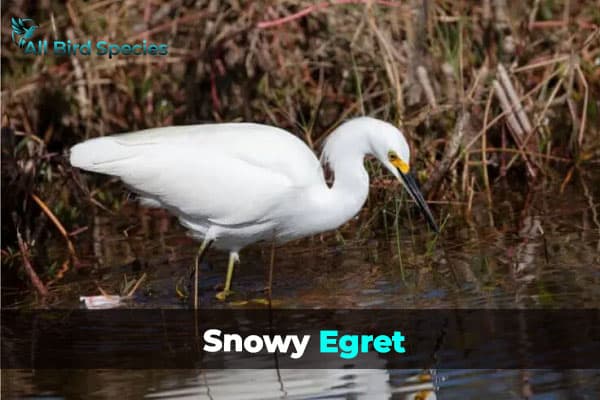
Differences Between Great Egret and Snowy Egret
Looking at the Snowy Egret and the Great Egret shows us their unique traits. They live in similar places but are quite different. The Snowy Egret is smaller and quicker than the Great Egret. Here are some key differences:
| Feature | Snowy Egret (Egretta thula) | Great Egret |
|---|---|---|
| Height | 22-26 inches | 30-40 inches |
| Wingspan | 34-40 inches | 51-67 inches |
| Color | All white with yellow feet | All white with a longer neck |
| Hunting Style | Quick and agile, employs foot-dragging | Steady and patient, relies on stillness |
The Snowy Egret and Great Egret are both vital to Texas’s coastal ecosystems. Knowing their differences helps us appreciate these birds more. It also shows why we must protect their homes.
8. Least Bittern
- Scientific name: Ixobrychus exilis
- Life span: 6 years
- Size: 28-36 cm
- Weight: 0.1-0.2 kg
- Wingspan: 41-51 cm
The Least Bittern, known as Ixobrychus exilis, is a hidden gem in Texas wetlands. It’s a small heron, about 13 to 16 inches tall. It’s amazing at hiding among the reeds and cattails, making it hard to spot.
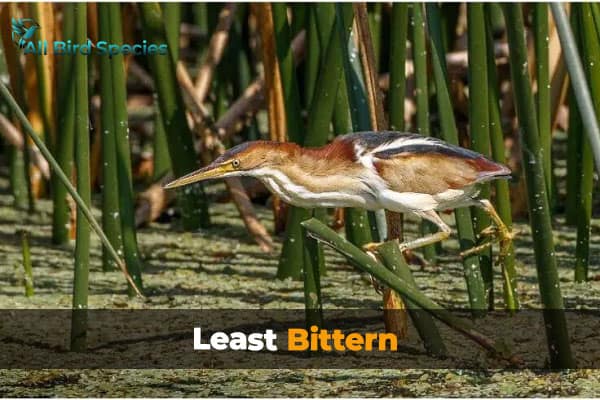
This bird loves to be alone and is very quiet. It hunts by being very quiet and sneaky. It catches small fish and amphibians in the marshes. Its unique calls can be heard in the wetlands, adding to the area’s sounds.
Learning about the Least Bittern helps us understand this shy bird better. It needs these wetlands to survive. So, we must protect these areas to keep the biodiversity in Texas safe.
In Texas, you can find herons at:
- Aransas National Wildlife Refuge (Gulf Coast)
- Padre Island National Seashore (Coastal areas)
- Local lakes and ponds (Urban and rural parks)
- Rivers and streams (San Marcos River, Trinity River)
Early morning or late afternoon are the best times for spotting them.
Check Our Previous Articles:
| Hawks in California |
| Orange and Black Birds in Colorado |
| Sparrows in Ohio |
| Hawks in Michigan |
| Black Birds With Yellow Beaks |
Wrapping Up…
Reflecting on the 12 types of herons in Texas, we’ve grown to appreciate these amazing birds more. From the Great Blue Heron to the Least Bittern, each species has its own special traits. These traits show how important they are to Texas’s wetlands.
Herons in Texas are not just pretty to watch; they help keep the environment healthy. They control fish and insect populations. Birdwatching lets us see how nature works and our part in keeping it healthy.

